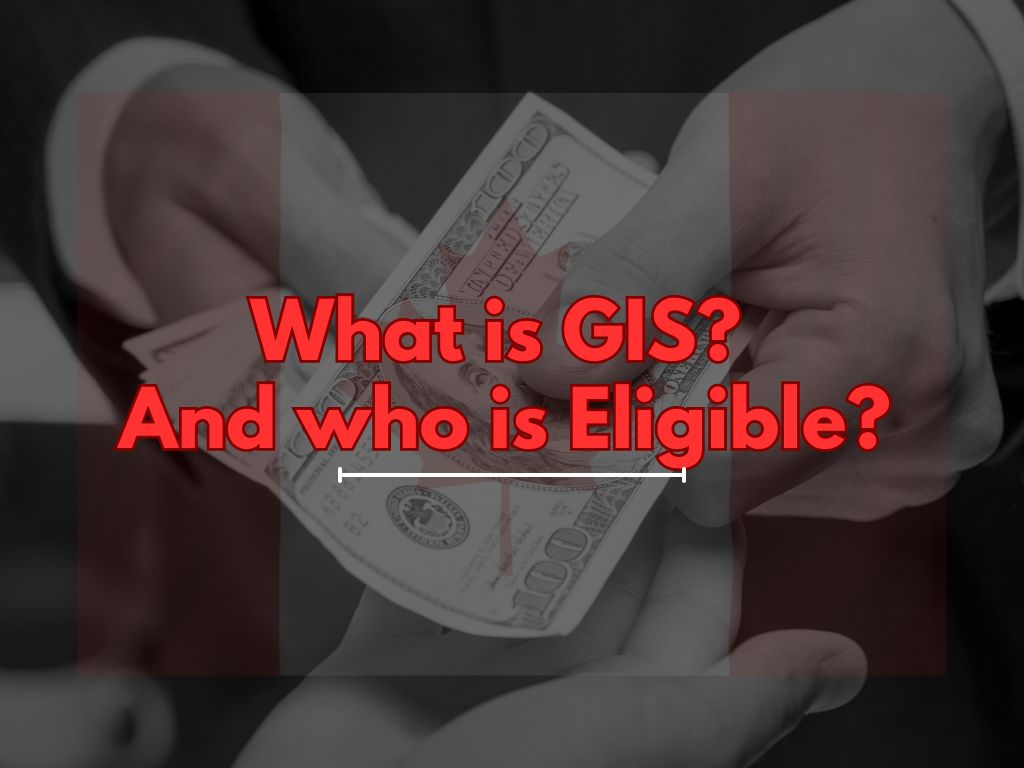Are you a senior citizen living in Canada with a low income? If so, you may be eligible for a monthly payment from the government called the Guaranteed Income Supplement (GIS). The GIS is a benefit that helps seniors who receive the Old Age Security (OAS) pension and have an income below a certain threshold. In this article, we will explain what the GIS is, how much you could receive, how to apply, and how to keep your payments updated. We will also share some tips on how to make the most of your GIS benefits and improve your financial situation.

What is the GIS and who can get it?
The GIS is a monthly payment that is added to your OAS pension if you have a low income. The GIS is not taxable, which means you do not have to pay taxes on it. The GIS is based on your income and your marital status. You can get the GIS if you meet the following criteria:
- You are 65 or older
- You live in Canada
- You receive the OAS pension
- Your income is below the maximum annual threshold
The maximum annual income you can have to receive the GIS depends on your marital status and whether your spouse or common-law partner receives the OAS pension or the Allowance. The Allowance is another benefit for low-income seniors aged 60 to 64 who are married to or in a common-law relationship with an OAS pensioner.
| Marital status | Spouse/common-law partner receives | Maximum annual income |
| Single, widowed, or divorced | N/A | $18,744 |
| Married or in a common-law relationship | OAS pension | $24,624 |
| Married or in a common-law relationship | Allowance | $44,688 |
| Married or in a common-law relationship | Neither OAS pension nor Allowance | $44,688 |
The amount of GIS you can receive also depends on your income and your marital status.
| Marital status | Spouse/common-law partner receives | Maximum monthly GIS amount |
| Single, widowed, or divorced | N/A | $936.93 |
| Married or in a common-law relationship | OAS pension | $558.28 |
| Married or in a common-law relationship | Allowance | $558.28 |
| Married or in a common-law relationship | Neither OAS pension nor Allowance | $936.93 |
How to apply for the GIS?
In some cases, you do not have to apply for the GIS. Service Canada will automatically review your eligibility and send you a letter to let you know if you qualify. This will happen if you are already receiving the OAS pension and you file your income tax return by April 30 each year. You will receive the letter the month after you turn 64¹.
In other cases, you may have to apply for the GIS. This will happen if you are not receiving the OAS pension, you did not file your income tax return, or the information in the letter from Service Canada is incorrect. You can apply for the GIS online or by mail. To apply online, you need to have a My Service Canada Account (MSCA). If you do not have one, you can register for one. You will need your Social Insurance Number (SIN), information about your spouse or common-law partner if you have one, your banking information, and the date you want your payments to start. To apply by mail, you need to fill out the Application for the OAS and the GIS (ISP-3550) form and include certified true copies of the required documents. You can mail the application to Service Canada or bring it in person to a Service Canada office.
What You Need to Know About the Old Age Security Increase in 2024
How to keep your GIS payments updated?
Your GIS payments are reviewed every year in July based on your income from the previous year. You need to report your income and deductions to Service Canada every year to ensure you receive the correct amount of GIS. The easiest way to do this is to file your income tax return by April 30 each year. Service Canada will use the information from your tax return to calculate your GIS payments. If you do not file your tax return, you will receive a letter from Service Canada asking you to provide your income information. You can do this online through your MSCA or by mail using the form included in the letter.
You also need to inform Service Canada of any changes in your situation that may affect your GIS eligibility or amount. These changes include:
- Changes in your marital status, such as getting married, divorced, separated, or widowed
- Changes in your spouse or common-law partner’s status, such as receiving the OAS pension, the Allowance, or the Allowance for the Survivor
- Changes in your residence, such as moving to another province or country
- Changes in your income or deductions, such as starting or stopping a job, receiving a pension, or making RRSP withdrawals
You can report these changes online through your MSCA, by phone, or by mail. You should report these changes as soon as possible to avoid overpayments or underpayments of your GIS.
🔊SCAM ALERT🔊
— Hon. Deb Schulte 🇨🇦 (@_DebSchulte) July 5, 2020
Seniors eligible for OAS and GIS, Service Canada will NOT contact you asking for your information to receive the special one-time payment. The payment is automatic and you do NOT need to apply. pic.twitter.com/qqu1j5OcGy
How to make the most of your GIS benefits?
The GIS is a valuable benefit that can help you improve your financial situation as a low-income senior. However, there are some things you can do to maximize your GIS benefits and avoid losing them. Here are some tips:
- File your income tax return every year, even if you do not have any income. This will ensure you receive the correct amount of GIS and other benefits, such as the GST/HST credit and the Canada Workers Benefit.
- Plan your income and expenses carefully. Some types of income, such as employment income, pension income, RRSP withdrawals, and investment income, can reduce your GIS amount. Some types of expenses, such as medical expenses, charitable donations, and RRSP contributions, can increase your GIS amount. You can use the GIS calculator to estimate how different income and expense scenarios can affect your GIS amount.
- Consider deferring your OAS pension. If you are eligible for the OAS pension but do not need it right away, you can defer it for up to 5 years. This will increase your OAS pension amount by 0.6% for every month you delay it, up to a maximum of 36%. This can also increase your GIS amount, as your OAS pension is not counted as income for the GIS. However, this option may not be suitable for everyone, as it depends on your life expectancy, income, and tax situation. You should consult a financial planner before making this decision.
- Explore other sources of income and support. The GIS is not the only benefit available for low-income seniors. You may also qualify for other federal, provincial, or municipal programs that can help you with your living costs, such as housing subsidies, energy rebates, property tax credits, health care benefits, and social assistance. You can use the Benefits Finder tool to find out what other benefits you may be eligible for.
Conclusion
The GIS is a benefit that helps low-income seniors who receive the OAS pension and have an income below a certain threshold. The GIS is not taxable and is based on your income and your marital status. You can apply for the GIS online or by mail, and you need to report your income and any changes in your situation to Service Canada every year. You can also use some strategies to maximize your GIS benefits and avoid losing them. The GIS is one of the ways that the government supports seniors in Canada and helps them achieve a better quality of life.
We hope you found this article informative and helpful. If you have any questions or comments, please feel free to share them with us and our fellow Hustlers. You can also visit our website, [HustleHub], for more tips and resources on how to improve your financial situation and achieve your goals. Thank you for reading and stay tuned for more articles from HustleHub.
Source: (1) Guaranteed Income Supplement – Canada.ca. https://www.canada.ca/en/services/benefits/publicpensions/cpp/old-age-security/guaranteed-income-supplement.html. (2) Guaranteed Income Supplement: Your application – Canada.ca. https://www.canada.ca/en/services/benefits/publicpensions/cpp/old-age-security/guaranteed-income-supplement/apply.html. (3) Guaranteed Income Supplement: How much you couldreceive – Canada.ca. https://www.canada.ca/en/services/benefits/publicpensions/cpp/old-age-security/guaranteed-income-supplement/benefit-amount.html. (4) Guaranteed Income Supplement – Canada.ca. https://www.canada.ca/en/services/benefits/publicpensions/cpp/old-age-security/guaranteed-income-supplement.html. (5) Guaranteed Income Supplement: How much you couldreceive – Canada.ca. https://www.canada.ca/en/services/benefits/publicpensions/cpp/old-age-security/guaranteed-income-supplement/benefit-amount.html. (6) Guaranteed Income Supplement: Your application – Canada.ca. https://www.canada.ca/en/services/benefits/publicpensions/cpp/old-age-security/guaranteed-income-supplement/apply.html.









